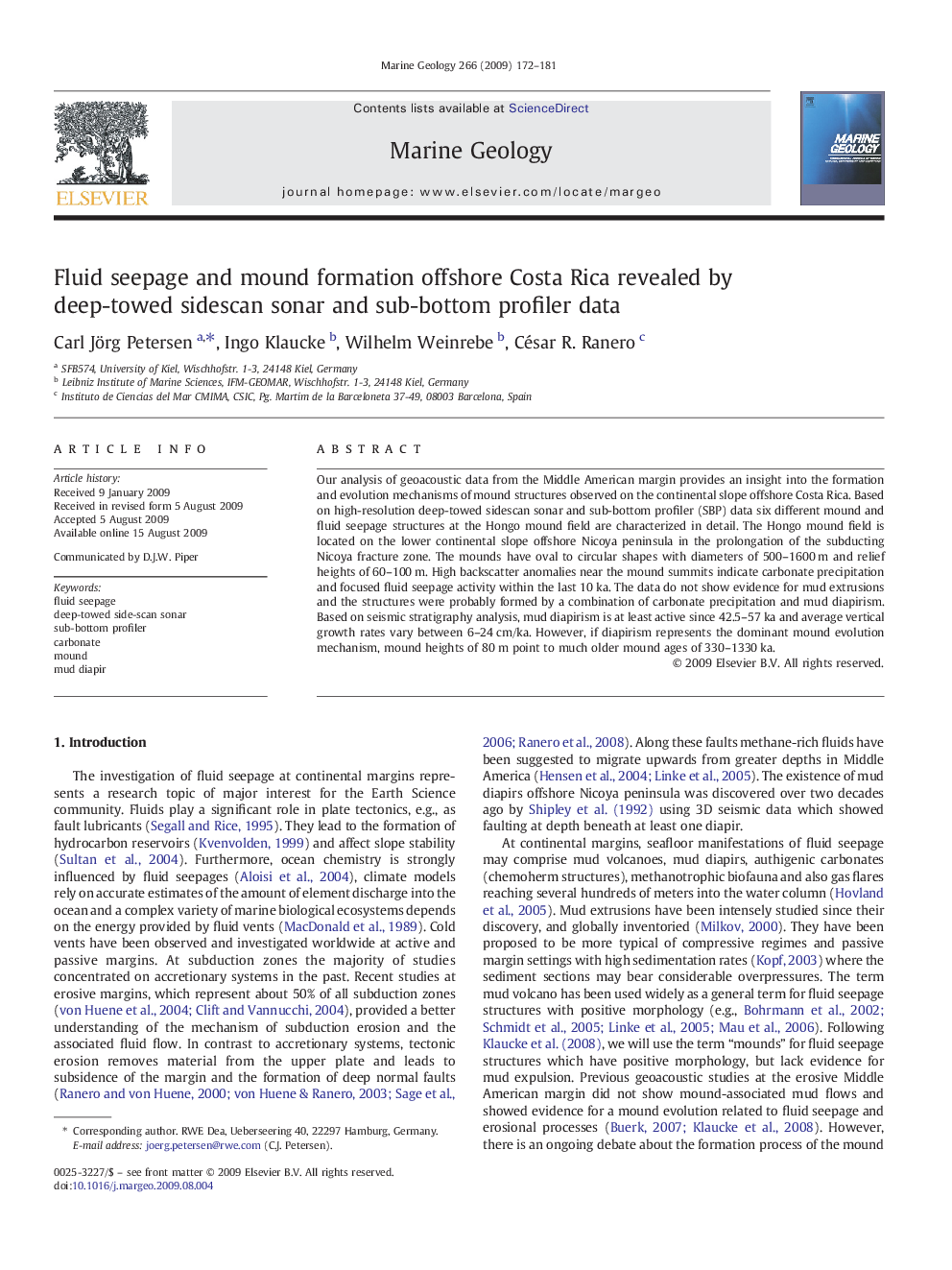| Article ID | Journal | Published Year | Pages | File Type |
|---|---|---|---|---|
| 4718972 | Marine Geology | 2009 | 10 Pages |
Abstract
Our analysis of geoacoustic data from the Middle American margin provides an insight into the formation and evolution mechanisms of mound structures observed on the continental slope offshore Costa Rica. Based on high-resolution deep-towed sidescan sonar and sub-bottom profiler (SBP) data six different mound and fluid seepage structures at the Hongo mound field are characterized in detail. The Hongo mound field is located on the lower continental slope offshore Nicoya peninsula in the prolongation of the subducting Nicoya fracture zone. The mounds have oval to circular shapes with diameters of 500-1600Â m and relief heights of 60-100Â m. High backscatter anomalies near the mound summits indicate carbonate precipitation and focused fluid seepage activity within the last 10Â ka. The data do not show evidence for mud extrusions and the structures were probably formed by a combination of carbonate precipitation and mud diapirism. Based on seismic stratigraphy analysis, mud diapirism is at least active since 42.5-57Â ka and average vertical growth rates vary between 6-24Â cm/ka. However, if diapirism represents the dominant mound evolution mechanism, mound heights of 80Â m point to much older mound ages of 330-1330Â ka.
Related Topics
Physical Sciences and Engineering
Earth and Planetary Sciences
Geochemistry and Petrology
Authors
Carl Jörg Petersen, Ingo Klaucke, Wilhelm Weinrebe, César R. Ranero,
